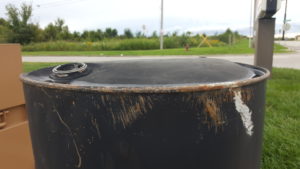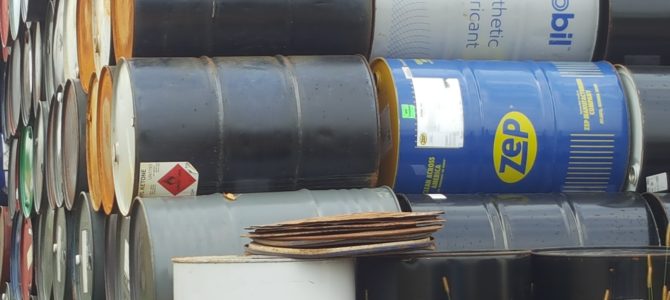The federal regulations of the U.S. Environmental Protection Agency (USEPA) at 40 CFR 261.7(a)(1) read, “Any hazardous waste remaining in either: an empty container; or an inner liner removed from an empty container, as defined in paragraph (b) of this section, is not subject to regulation under parts 261 through 268, 270, 0r 124 of this chapter or to the notification requirements of section 3010 of RCRA.” In other words, if a container meets the definition of an empty container (aka: RCRA Empty) as defined in paragraph (b) then it is not subject to regulation under RCRA as a hazardous waste.
The definition of an empty container in paragraph (b) includes a container or an inner liner removed from a container that has held any hazardous waste. The determination of an empty container for compressed gases and acute hazardous waste are distinct from all other hazardous waste and are addressed later in this article.
RCRA Empty determination for a container of hazardous waste Option #1:
- All wastes have been removed that can be removed using common practices to remove materials, eg. pouring, pumping, and aspirating, and
- No more than 2.5 cm (1 inch) of residue remains on the bottom of the container.
Or…
RCRA Empty determination for a container of hazardous waste Option #2:
All wastes have been removed that can be removed using common practices to remove materials, eg. pouring, pumping, and aspirating, and
- For containers ≤119 gallons in size (non-bulk containers): No more than 3% by weight of the total capacity of the container remains in the container or inner liner, or
- For containers >119 gallons in size (bulk containers): No more than 0.3% by weight of the total capacity of the container remains in the container or inner liner.
|
Contact me with any questions you may have about the generation, identification, management, and disposal of hazardous waste Daniels Training Services, Inc. 815.821.1550 |
You are free to choose either of the two options above in determining if your container meets the definition of empty per paragraph (b). Note that Option #1 is process oriented in its definition whereas Option #2 is a results oriented standard depending on the capacity of the hazardous waste container.
RCRA Empty determination for a hazardous waste that is a compressed gas:
- When the pressure in the container approaches atmospheric. A subjective definition, but it means that your compressed gas container better be empty if you intend to use the RCRA Empty Exemption.
RCRA Empty determination for a container of an acute hazardous waste:
- The container or inner liner has been triple rinsed by a solvent capable of removing the residue (either a commercial chemical product, or a manufacturing chemical intermediate; or
- The container or inner liner has been cleaned by another method that can be shown by scientific literature or by testing to achieve equivalent removal; or
- The inner liner, which prevented contact of the material with the container, has been removed. In this case the container may then be suitable for the RCRA Empty Exemption, not the liner.
|
Like this article? Subscribe to my Monthly Newsletter No marketing emails! |
If your containers meet the definition of RCRA Empty, then the residue is not subject to the hazardous waste regulations under RCRA, no matter the total quantity of the residue. This provides you with the freedom from regulation to pursue recycling or reconditioning options with your containers.



